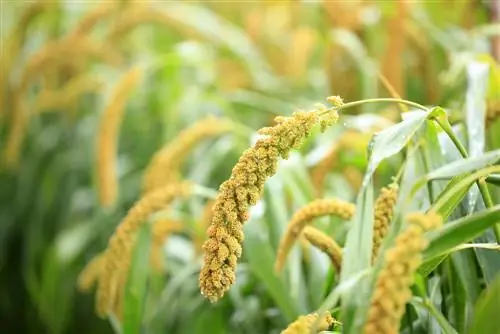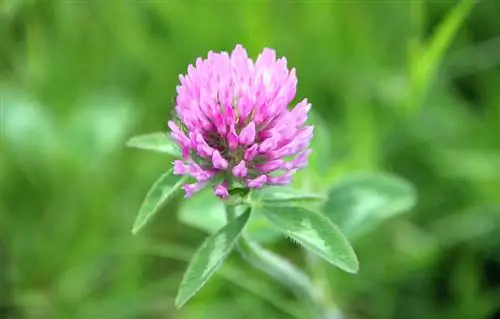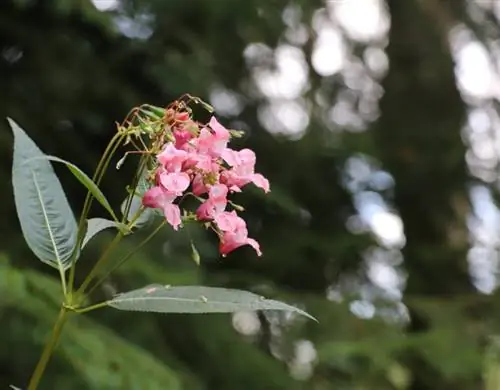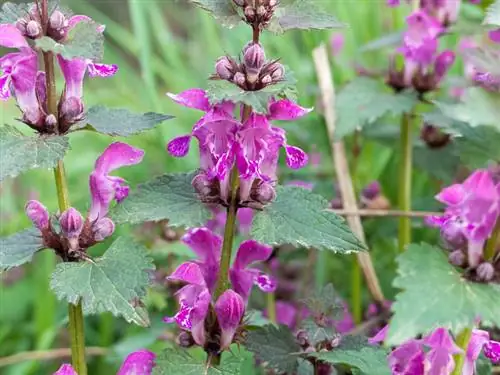- Author admin [email protected].
- Public 2023-12-16 16:46.
- Last modified 2025-01-23 11:21.
Have you ever tried millet? The nutty grain not only has a wonderful taste, but also many other interesting properties. Since the type of grain is not nearly as well known as corn, for example, many people don't know how and where millet is grown or where it comes from. Not to mention the countless varieties. The following profile contains a lot of knowledge about the small grains. Find out more!
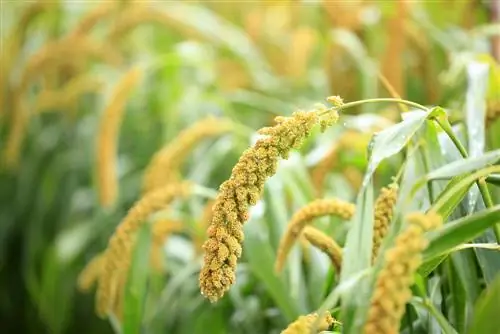
What is millet and where does it come from?
Millet is a nutty grain with the Latin name Panicum miliaceum, originally from Africa and consists of many varieties such as golden millet, finger millet and pearl millet. It is rich in nutrients such as iron, silicon, magnesium and vitamins and is well suited to a gluten-free diet.
Name origin and history
- Latin name: Panicum miliaceum
- derived from the old Germanic term “hirsa” (=satiety, food)
- Collective term for several small-grain cereal varieties
- represents an important staple food, especially in developing countries on the African continent
- was already known in the Stone Age
- was increasingly displaced by the import of food from the New World (e.g. potatoes)
- has become increasingly important again since the 20th century due to increasing food intolerances such as celiac disease
Occurrences
Dissemination
- Sorghum is cultivated all over the world
- The main growing areas are the USA as well as India and numerous African countries
- originally from Africa
Location requirements
- prefers mild climate
- ideal location depends on variety
- does not thrive on cold soils
- does not tolerate waterlogging
- prefers sandy soils
- numerous species survive long periods of heat and drought
- sensitive to frost
Habitus
- Plant family: sweet grasses
- grows several meters high
- Leaves are slightly curved downwards and narrow
- panicles with flowers
- Flower color: white, yellow or dark red
- large-grain and small-grain varieties
- Grains are dull yellow, round and glassy (color varies depending on carotene or protein content)
Millet species
- is divided into two main groups: sorghum millet (large grains) and millet millet (small grains)
- other well-known varieties: brown millet, black millet, golden millet, blood millet, foxtail millet, panicle millet, pearl millet, finger millet, dwarf millet
Use in the kitchen
- as porridge
- in muesli
- in salad
- as flatbread-
- general in pastries
- as germinated grain
- brewed into beer
- as a casserole
- as a side dish
- with vegetable dishes
- Millet serves as a substitute product for gluten intolerance
Ingredients and he alth effects
- Iron
- Silicon (silicic acid)
- Magnesium
- Potassium
- he althy fats
- Vitamin A, E and B
- numerous amino acids
- Fluorine
- Effect: blood-building, urinary and sweat-inducing
Continue use
- as livestock and bird food
- Natural fiber
- Production of molasses

